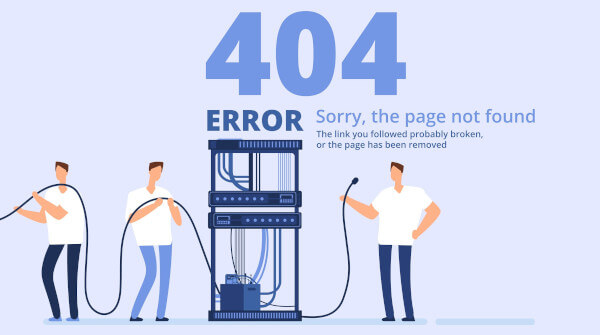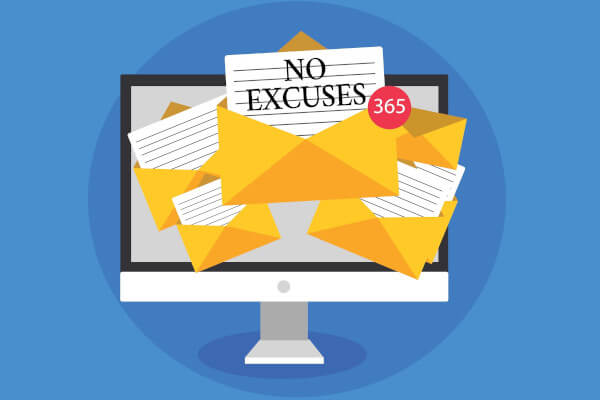
Increasing online traffic is the goal of any website managers, developers, or e-commerce website builders. More traffic equals more customers and, therefore, sales. However, it can be too much of a good thing.
If you don't take steps to address website or app performance during traffic peaks, it can cause those assets to slow down and ultimately crash. Making you a victim of your own success!
Website crashes are a catastrophe for e-commerce stores. Imagine a physical shopfront having its front doors randomly open and close, the lights switch on and off, and products appear and disappear at random. This is what it's like for shoppers when an e-commerce site fails.
Beyond e-commerce, it's terrible for your image. When a user is on a site, one wrong impression is enough to turn them off that website forever.
All crashes are annoying, but crashes due to high traffic are perhaps the most frustrating. They can come from your marketing team doing its job too well. Imagine the frustration of a campaign manager who crafts the perfect online campaign to get visitors to your site, only to see it cave under pressure. There's nothing worse than a website not working at the precise moment you need it to.
That's why it's worth having your website tested and ready to go in the event of a significantly increased number of users.
With that being said, here are five tips to avoid website crashes despite high traffic.
1. Proper Planning Prevents Poor Performance
Like everything in life, you need to plan for the worst and hope for the best. It's no different when it comes to website traffic. Before any campaign or landing page goes live, set a schedule for load testing and simulations well in advance.
Deploy a temporary team if needs be. Use load-testing tools commonly available online to simulate a massive traffic spike. This will help you identify the slowest-loading pages, which you can optimize before a product or campaign launch.

2. Ensure Daily Backups
Ensure in the lead-up to a product or campaign launch that you're backing up all your website files, including all databases and plugins. A recent backup is vital if the worst happens, and you must get back up and running.
3. Make Use of a CDN
A CDN (content delivery network) is a cloud-based data service that scales itself depending on your needs. That allows it to optimize the delivery of every type of content, from basic text-laden website content to data-heavy elements like external software and embedded videos.
There are a few big players on the market, like Azure and Amazon, but whatever you choose, be sure it's set up and regularly tested at least a month ahead of your expected traffic surge.
4. Install the latest versions of website software
Shopping carts, message boards, chatbots, and content management systems must be updated with their latest versions before launch. Often, outdated software can be exposed, leaving your site vulnerable to unidentified bugs.
So, examine your external software and plugins and ensure all are up to date. This methodology can be carried over into your workplace as well. For example, suppose your call center workforce management software isn't up to date. In that case, your website crashing will couple with your business phone service no longer functioning, and then the damage may be too significant to be undone!
5. Run server maintenance
Ahead of your expected spike, contact your webmaster to ensure no data restrictions or caps are in place with your website host. Without telling you explicitly, many web hosts impose data caps limiting incoming and outgoing data to protect their servers.
If you rely on an external server or have yet to complete full cloud migration, you must sort this data usage out ahead of time. It may require additional expense, but a good user experience delivers that ROI!
So, with those five things in place, you should be okay come the big day of an expected traffic spike.
However, not all traffic increases can be predicted. So, let's talk about what you should do in the event of a crashed website:
- Check your host
First up, make sure it's not an issue with your host. If it is, get in touch with your support team directly. Depending on the speed and quality of the assistance, you may need to find a new host. They may have chosen the worst time to do website maintenance.
- Examine the root cause
It shouldn't be traffic because the five steps above should prepare for that. Traffic aside, it may be server maintenance, network config issues, a hack, the weather, or coding mistakes. Prepare for each by employing the right workplace technology on hand, ready when you need it.
- Pause advertising
Advertising while your website is down is a waste of funds and leaves a bad taste in the mouth of those who click an ad only to be greeted with a 404 message. Put advertising on hold while you figure out what went wrong
- Check if your business e-mails work properly
Ensure effective communication and avoid potential business losses by checking if there are any e-mail problems and whether your business emails work properly.
- Let people know ASAP
Inform your customers or user base via social media channels that your website is down and being repaired as soon as possible. Making them aware there's a problem, and you're trying to fix it displays honesty and empathy. If you have to, offer discount codes to returning customers. If you play your cards right, you could turn this into a positive marketing piece!

Launching a new campaign or product online has one goal in mind, and that's to drive traffic to your website. This, however, can be a double-edged sword. If your site is not prepared for a spike, then the first impression many will have of your brand is that you don't work.
The five tips above represent a process methodology to ensure your website can carry even the most massive loads. Every page of your website must be tested and retested again, as one weak link can sink the whole ship.
Before attempting to drive traffic to your website, the onus is on you to ensure you're ready to handle it. But, if things go wrong, the focus shifts to getting back on your feet.
If your data is backed up, it shouldn't be too hard. And, if your software is up to date, then figuring out the root cause is much easier.


 Copyright 2000-2025, WebSitePulse. All rights reserved.
Copyright 2000-2025, WebSitePulse. All rights reserved.